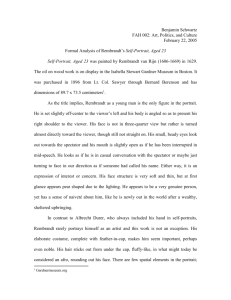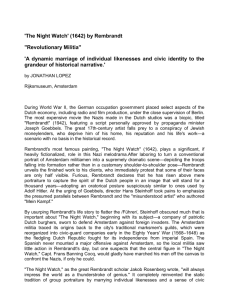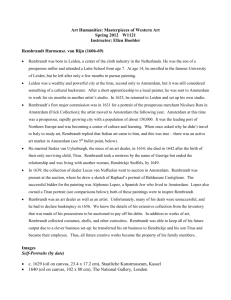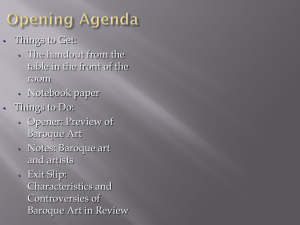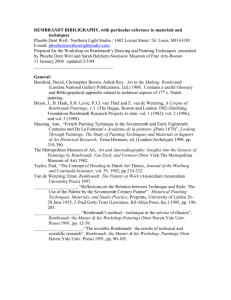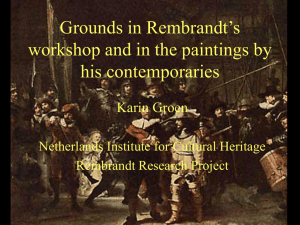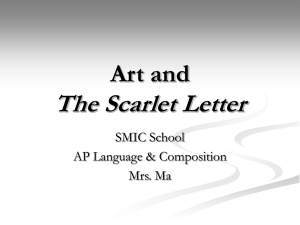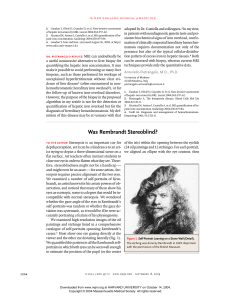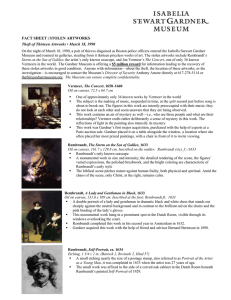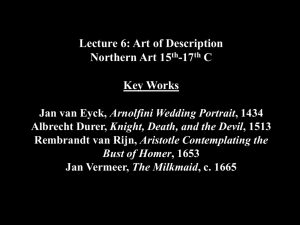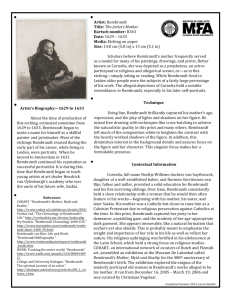What Makes A Rembrandt A Rembrandt
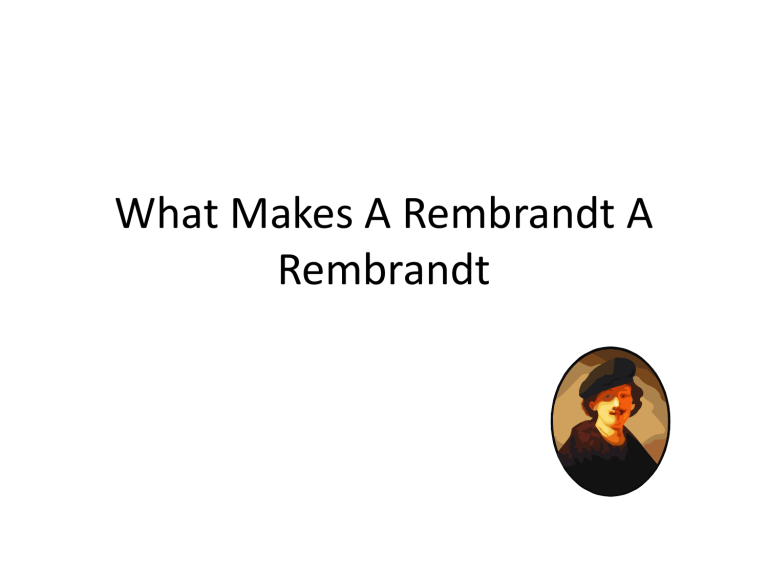
What Makes A Rembrandt A
Rembrandt
Nonfiction- writing that tells about real people and real experiences
• Essays and articles are nonfiction pieces that present information on a subject
• Formats:
– Expository- presents facts
– Analytical- shows how smaller parts fit together
– Humorous- evokes laughter
– Persuasive- persuades reader to take action or change ideas
– Narrative- tells a true story
– Descriptive- appeals to the five sense
– Reflective- a writer’s insights about the importance of an experience
Nonfiction
• Organization
• Chronological- time order
• Cause and Effect- shows relationship among events
• Comparison and Contrast- shows similarities and differences
• Problem and Solution- gives a problem or problems and one or more solutions
What Makes a Rembrandt a Rembrandt
•
•
• Is an article
• Was written by Richard Muhlberger
• Is an analytical piece
• Has some compare and contrast sections
•
•
• Is expository and descriptive
Presents facts about a famous painting
Was written to describe and analyze the many interesting features of the painting
The Night Watch
Rembrandt
• Was a Dutch artist
• Used chiaroscuro- light from darkness
• Was the first not to line up militias in the portraits he made for these companies of men
• Was chosen to paint the portrait of Captain
Banning Cocq’s militia so that everyone would be impressed with his choice of artist
Militias
• Defended the cities
• Became Social Clubs
• Had emblems
• Had parades
• Wore old costumes and armor
The Night Watch
• Is not at night and no one is on watch
• Is the most famous Dutch painting of all time
• The leader of the company is Captain Frans
Banning Cocq
• His lieutenant is Captain Willem Van Ruytenburgh
• The men are posed as if they are preparing for a parade
• The men are dressed in historic costumes to give them special honor
• The girl is a mascot who will hold the emblem, bird claws
Workbook page 101
• “How to Build a Doghouse”
• Format: expository Purpose: to explain
• “Don’t Throw that Cardboard and Paper in the
Trash”
• Format: persuasive Purpose: to persuade
• “Moving to Tucson Changed My Life”
• Format: reflective Purpose: to share insights
Workbook Page 101
• Topic: a strange animal Purpose: to entertain
• Format: Humorous Reason: entertains the audience
• Topic: vote for a candidate Purpose: to persuade
• Format: Persuasive Reason: attempts to persuade reader to take a particular course of action
• Topic: Civil War Purpose: to present ideas
• Format: Analytical, Expository Reason: Breaks a large idea into smaller parts to see how they work together as a whole
Workbook page 102
• 1. “What Makes a Rembrandt a Rembrandt?” is an article because it is a short piece on a particular subject.
• 2. The first paragraph in “Two Handsome
• Soldiers” is organized as comparison and
• contrast.
• 3. The two real people that are the most
• important in this article are Rembrandt and
• Captain Frans Banning Cocq.
Workbook 102
• 4. Richard Muhlberger uses an expository format for sections of “What Makes a Rembrandt a
Rembrandt?” to inform readers about the painting which is commonly known as The Night Watch.
• 5. C. To explain Rembrandts painting techniques.
• E. To inform readers with facts about the painting, The Night Watch.
